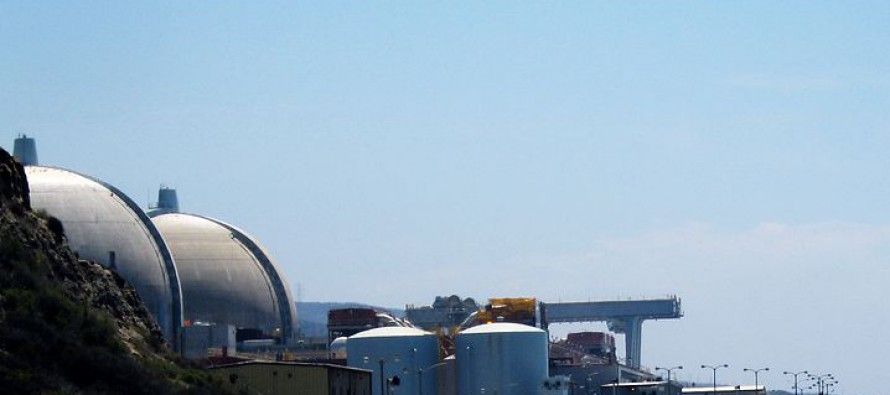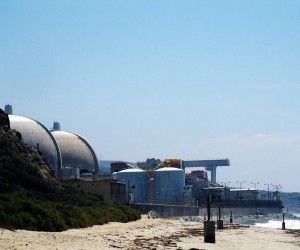Costly fallout from San Onofre’s decommission

The Nuclear Regulatory Commission held a public meeting Thursday in Carlsbad, during which members discussed the process by which the San Onofre Nuclear Generating Station will be decommissioned and, importantly, who will ultimately foot the projected $4 billion bill.
This past June, Southern California Edison unexpectedly announced it would permanently shutter the nuclear plant, which generated 2200 megawatts when fully operational, roughly 20 percent of the utility’s overall electricity production.
Edison took San Onofre offline in January 2012 because of problems with steam generators installed by Mitsubishi Heavy Industries. After trying and failing for 17 months to get regulatory approval to restart its two reactors, Edison thought it best just to abandon the plant.
NRC spokesman Victor Dricks told KGTV in San Diego that Edison has three options for mothballing San Onofre. “They can probably disassemble most of the equipment on site,” he said. “They can let time go by 10, 20, 30 years, up to 60 years. Or they can choose a third option, which is called entombment, where they basically could build a giant sarcophagus around the plant.”
Whatever option Edison chooses, the decommissioning process will be long and expensive. And while Edison, which owns 78 percent of San Onofre, will bear some of the expense itself, the utility also expects its ratepayers to shoulder some of the cost.
Costs
Indeed, in full-page newspaper advertisements published last month in the Orange County Register and the Los Angeles Times, Edison stated that it is “vigorously pursuing recoveries” from both Mitsubishi Heavy Industries and the utility’s insurers, “there may be costs that are not recovered” and those “could be significant.”
In that event, which appears highly likely, Edison believes that its ratepayers (as well as ratepayers for Sempra Energy, which owns roughly 20 percent of San Onofre, and the city of Riverside, which owns roughly 2 percent) should share the financial burden.
“Unlike other businesses that invest, produce and sell their products for whatever price the market will bear,” stated Edison’s newspaper advertisements, “our prices are set by our regulator, the Public Utilities Commission.”
Those prices — or rates — “allow us to recover our operating costs,” the utility explained, “without any mark-up or profit.” It also allows Edison “to recover at cost our investment in system assets, over time.”
As such, Edison has asked the PUC to raise its electricity rates $2.4 billion over seven years to partially recover the costs of San Onofre’s decommission. Meanwhile, Sempra Energy, parent of San Diego Gas & Electric, has separately sought approval of an $808 million rate increase to recover its costs.
It remains to be seen if the PUC approves the higher electricity rates sought by Edison and Sempra to defray the cost of the nuclear plant’s permanent shutdown. While the utilities may not get all they are asking for — more than $3 billion between them – they very well may get some, if not much, of it.
Related Articles
EDD responds to questions on computer glitches
This is Part 1 of a series. Obamacare’s computers aren’t the only government systems struck by major glitches. Two months
End of Nuke Power in CA, America
John Seiler: One solution to California’s need for electricity would have been to construct more nuclear power plants. Doing so
Study: Green power worst way to cut CO2
This is Part 1 of a two-part series. Most people probably know more about Cap’n Crunch cereal than about





